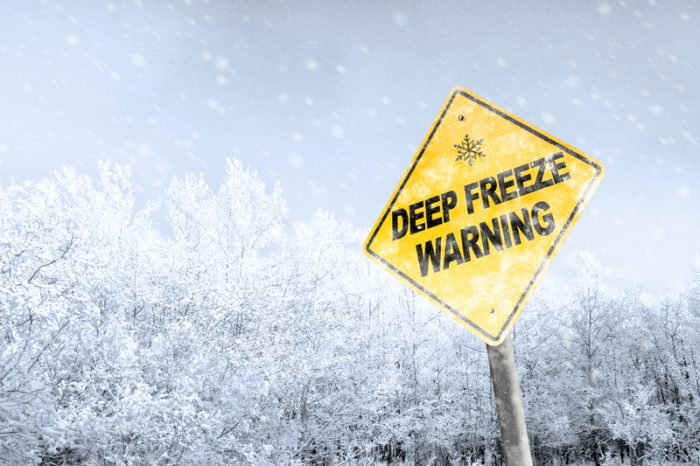Right now, many states in the southern United States are having the coldest weather they've had in decades. A whole century even. It has been an especially abnormal winter in Texas.
Normally at this time of year, the vast state—which is bigger than most European countries—is in the middle of beautifully balmy weather. Instead, it has been hit with not only record-breaking cold (around -18°C/0 °F), but huge failures of its 'power grid' (the system that provides electricity for an area).
This means that it is freezing across the state, but people are unable to keep their homes warm.
This tragic crisis brings up a lot of questions. Why is cold weather that is normal for a place like Manitoba so devastating in Texas? Why can't the power grid keep up with the demand for heat? And maybe most bewildering?
If the world is getting hotter, why is Texas so cold?
Perplexing purple
It's a fair question, because this cold weather certainly is weird. Recently, a tweet from a meteorologist (weather scientist) named Matthew Cappucci showed just how bizarre it is.
This is incredible.
That purple bleeding south you see isn't from clouds – extreme #cold is expanding as night commences, tricking satellites over #Texas and #Oklahoma into thinking there are clouds.
Lake-effect snow too from Lakes Conroe and Livingston north of #Houston. pic.twitter.com/2envfn9tmt
— Matthew Cappucci (@MatthewCappucci) February 16, 2021
On weather satellite images, a purple colour is normally reserved for clouds. To see clouds at night, satellites use the fact that clouds are much cooler than the ground below. But in this tweet, that mass of purple is not clouds at all—it's super cold air, invading the state from the north.
It is actually a very clear illustration of what is happening to the state. And why a warmer Arctic doesn't always mean a warmer winter for all.
Northern invaders
This scene in Austin, Texas is much more like Chicago or New York. (Getty Embed)
The Arctic is typically home to some of the coldest air on Earth. It stays contained up there thanks to something known as the 'polar vortex'. (A vortex is something that swirls, like a whirlpool or cyclone.) This is a large rotating system of air—about 1,000 km (600 miles) wide—that locks the extreme cold around the pole.
Normally, the difference in temperature and pressure between the Arctic and the warmer air below it keeps that vortex in place. But if things get warmer than normal in the Arctic—which they are—that vortex is more likely to break down. The cold air is suddenly free to roam, and so it often ventures south, blasting areas with super cold Arctic air.
Sort of normal, sort of not
This scene would be normal in a place like Edmonton. But in Texas, local authorities are struggling to adapt to the highly unusual weather. (Getty Embed)
On its own, a wandering polar vortex is not really that strange at all. In 2018, this phenomenon led to a viciously cold winter for much of Canada and the eastern United States. But while that cold snap was colder than usual, these were still places that normally got snowy, chilly winters.
Texas, on the other hand, does not.
So the really odd thing about this weather is not that it is happening, it's that it is moving so far south. Which leads to why this has been such a problem for Texas and its power grid. It's not normal, and the unexpected change is demanding much more energy than anyone would have ever expected. (Not to mention icy roads people are not used to driving on.)
Climate isn't just about heat
Areas of Texas are using rolling blackouts—turning the power off for periods of time—to try to save power for the entire state. (Getty Embed)
Is climate change for certain the reason why Texas is in a deep freeze? Climate scientists seem to think so, though the planet's weather system is very complex. But it does show a point that most experts and activists agree on.
Climate change is just that: Change. Though the world is getting hotter, this doesn't mean that every single change is going to be about hotter or drier temperatures. It just means that things will change unpredictably and more often than we're used to seeing.
In Texas (as well as Oklahoma and other usually-warm American states), people are calling for the government to make changes to power grids so that they can get through the type of weather that places like Minnesota or Quebec call normal. For everywhere else, the main lesson appears to be this: Always expect the unexpected.
 An unexpected deep freeze is tricky anywhere, but it's been especially dangerous in the southern United States. (Photo
An unexpected deep freeze is tricky anywhere, but it's been especially dangerous in the southern United States. (Photo 








